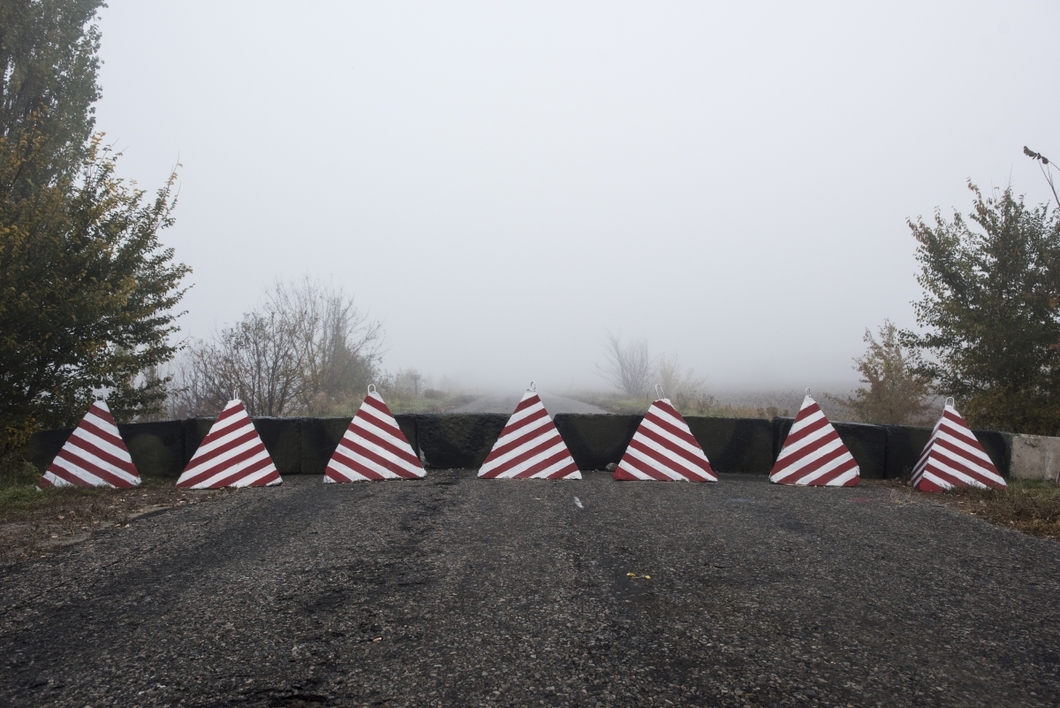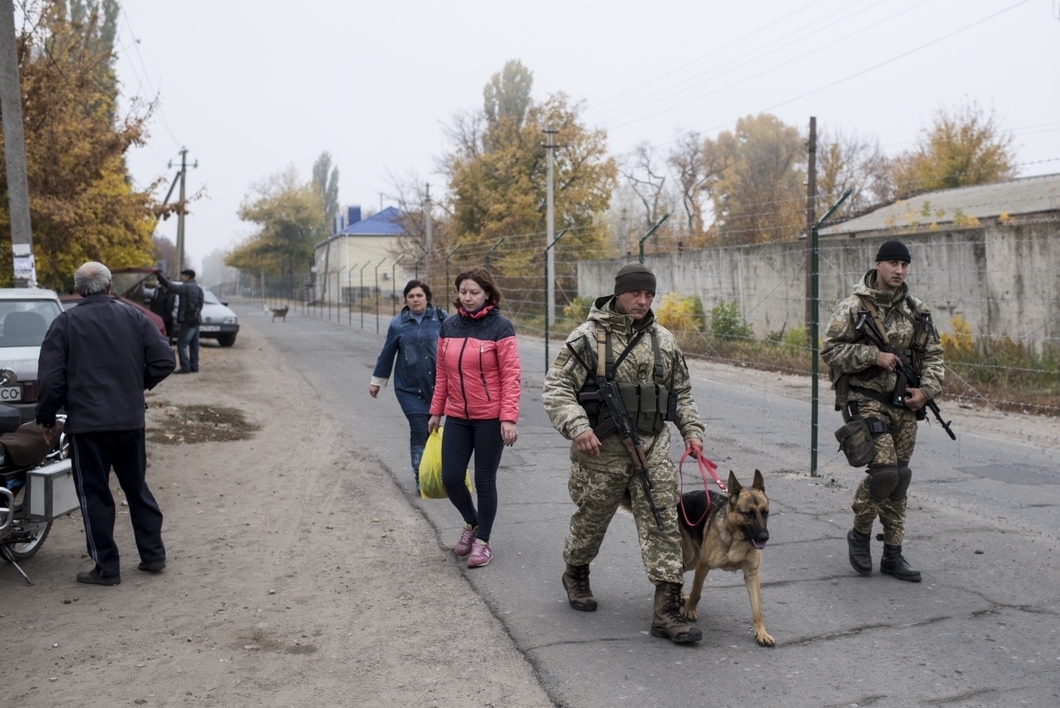Russian-Ukrainian border: fence of the 'friendship of the nations'
From zaborona.com
Melovoe in the Luhansk region is a town at the easternmost point of Ukraine.
It borders the Russian village of Chertkovo in the Rostov region. In Soviet times and before the beginning of the Ukrainian-Russian military conflict, these two settlements merged into one. The two countries divided the same street in half – and it still bears the name, the Friendship of the Nations
But the friendship has come to an end
Citizens of the two countries, according to local stories, used to run across for a visit, and the guards often turned a blind eye to this.
In September 2018, however, the “friendship of nations” came to an end.
• Life behind the barbed wire along Georgia’s line of demarcation
• The Kafkaesque nature of crossing the border between Russia and Abkhazia
In the fog, you might not see the dozen or so concrete pyramids painted with white and red lines that blocked the road. The asphalt continues behind them, but there are no cars or pedestrians.

Thee concrete blocks mark the border. As of August 2018, it is impossible to drive on this road, and residents have to use the bypass road.
Now, to get from one Ukrainian village to another, you need to travel dozens of kilometers of the bypass, although the distance via the overlap of roads was several times less.
This is one of the reasons why fire brigades and ambulances take four times longer than before.
The head of the Melovsky District Administration, Arthur Korol, explains that in 2003 the Verkhovna Rada of Ukraine ratified the delimitation agreement. Then there was a general commission of representatives of two states, which decided where the border should pass.
“In principle, it coincided with the administrative border of the Soviet Union,” says Korol, “But now we understand that the Russian Federation has ‘laid mines’ for the future, that is, pieces of its infrastructure on our territory, and our infrastructure on their territory.”
Gasoline for rubles
On the outskirts of the village of Melovoe there is a pedestrian and automobile checkpoint. There is usually a queue of cars, usually from the Ukrainian side.
One of the drivers says he goes to Russia almost every week. There, he fills up his car because fuel in Russia is almost two times cheaper.
Many in Melovoe thus earn a living, because there are few other opportunities here.
The fence divides the street of Friendship of Peoples exactly in half – into Russian and Ukrainian parts. According to plans from 2014, barriers, ditches and trenches were to appear on the border. But in 2017, the National Anti-Corruption Bureau of Ukraine opened a case of embezzlement during the implementation of the project.
Its not difficult to go to Melovoe to Russia. It is only necessary to cross the rails over the railway bridge, where a small border traffic point operates.
On the other side of the rail is the Chertkovo railway station. In the buffer zone between the Melovoe and Chertkovo border, those who have no right to use the system of small border traffic – the railway bridge – cross the border.

The former employee of the Melovoe Oil Refinery Victor has been retired for ten years and lives in Russia permanently. But recently, from a previous job, he was given a financial award for a professional holiday. He has no international passport, so a friend and a colleague from Melovoe gave him money. He comes to Chertkovo several times a week to buy medications for his wife and play at the local chess club.
“I don’t like, of course, that now it’s impossible to get to Ukraine,” says Victor, “I have so many friends and colleagues there. Previously, I went often. But some people even have relatives buried there!”
The approach to the new fence between the states from the Russian side is limited. Novaya Gazeta wrote that the Russian part of the Friendship of Peoples is surrounded on three sides by Ukraine, and on the fourth side it is supported by a railroad, which is also surrounded by a fence. According to the Novaya Gazeta, 350 citizens of the Russian Federation live in this small little corner.
“It’s a pity that Ukraine separated itself from us,” a local resident says about the fence. “We used to come to you often, but now what?”
Russian media reports that there are houses in Chertkovo, which are still connected to Ukrainian utilities, and because of this, Russians are paying for utilities at Ukrainian prices. Some of these residents have left Chertkovo under the resettlement program.
Carried out with the support of Media Set.



















